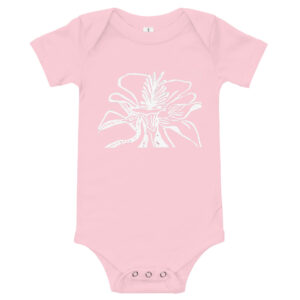
What is an Original Print?
An Original print in printmaking is a piece of paper that has been inked using a matrix such as a wood block, linoleum, stone, or even a metal sheet in order to create a piece of art.
The use of the matrix allows for the work of art to be multiplied.
Now why can’t I just draw something and get it printed at a big printing facility?
This is a possibility and many artists I know who paint can get their painting replicated this way. This way of getting their paintings “copied” enables them to sell their art at a more reasonable price than their original painting would sell for.
This article is not an argument for one way or the other, but simply to answer a question I get fairly often “What is an original Print?”
I will get into the history and then explain a little more about prints.
History of Print
Some of the greatest artists in the world have made prints using traditional printmaking methods. Rembrandt created beautiful etchings and Picasso made linocut prints.

Rembrandt
1650
97 x 131 mm.
They, like me, found at least for a portion of their career to enjoy the print process.
Before the invention of the photograph every print made had to be created using a matrix such as copper for an etching, wood for woodcuts, and usually limestone for lithography.
This was done to bring repeated images to people in a newspaper or in a book. There was no instagram back then, so this was the method in which to receive information and to see the works of art that were in a museum in another part of the world.
Why not just show us a drawing instead of making a print?
It would be simpler to just create a drawing and then frame it and enter it into a gallery, than to take that drawing and take it through the physical and rigorous steps of creating a print.
The process of drawing, inking, and pulling a print transforms a simple drawing and creates a uniqueness to the composition that could not be made using any other traditional art making methods.
A drawing is beautiful, and in itself is a work of art. Just as an underdrawing is used when creating a painting, it is also used when creating a print.
Reproduction versus Original

With the introduction of the photograph in the early 1800s came a complete transformation with printmaking.
It became easier to replicate artwork without the older methods of etching and printing.
So what is the difference between a reproduction print and an original print?
Reproduction Print

A reproduction print is simply where a copy is made of the art. Using a photograph of the original work of art and it is then sent to a printer machine and a copy is made. This is the way most people replicate their paintings and what you would buy if you were to purchase a print at a museum of a famous work of art.
Original Print

An original print is special because each print is made by hand using the matrix created by the artist. The matrix is inked by the artist and the paper pulled through a press by the artist. Every element of the Original print is done by hand by the artist and therefore an original work of art.
How to tell if the print is original

Usually an original print is obvious because it has been signed by the artist. However, because many artists have signed reproduction prints of their work it gets a little confusing.
An original print in printmaking is where the image hand printed by the artist has been signed by the artist.

In printmaking the paper used is usually telling as well as the texture of the print itself. An embossing occurs when hand printed because of the contact between the print matrix and the paper. The paper is usually handmade and deckled, and can range from thick to thin.
However, it can be difficult at times to tell the difference between an original print and a reproduction form called a Giclee print.
Giclee printmaking uses sophisticated inkjet printers to reproduce artwork. They usually produce museum quality reproductions and can last as long as an original painting or print. They can be nearly impossible to distinguish the difference between the original and the reproduction.
To avoid confusion, ask the artist if it is an original or a reproduction. They should let you know.
Limited Edition

Limited Edition means that a limited amount of prints are made in order to increase the value of the print.
Usually this is a predetermined amount set by the artist. The edition number is usually written directly under the printed surface of the paper near the artist’s signature.
The number is written as a fraction where the first number is the number in order printed and the number underneath is the edition size.
Some collectors find that the first prints (1 /100) are more valuable because the matrix from which a print was made from may deteriorate as the edition becomes larger (99/100).
Signing and “Editioning” the print started in the 1800s, where after a limited amount of prints were made the artist would destroy the matrix the print was made from.
In lithography, monotypes, and with an etching the destruction of the matrix is more commonly done because the matrix can be reused. The materials for these types of printmaking are a sheet of metal or the limestone in lithography.
I am not sure I would have the heart to destroy the wood block or linoleum block matrix used to make linocuts and woodcuts. I do not practice this method, unless I am printing a reduction print.
Rembrandt did not destroy some of his printing plates and used the matrix plates until they were damaged by use.
I can write an entirely different post about exactly how to edition a print at a later date so please subscribe to stay up to date.
Clarification
My hope is that I have helped paint a clearer picture as to what an Original Print is. You all can use this as a reference for your friends who ask you what an original print is.
Citation
Griffiths, Antony. Prints and Printmaking: University of California Press, 1996.
Hults, Linda C. The Print in the Western World: an Introductory History. University of Wisconsin Press, 1996.
Platzker, David, and Elizabeth Wyckoff. Hard Pressed: 600 Years of Prints and Process. Hudson Hill Press in Association with International Print Center New York, 2000.


